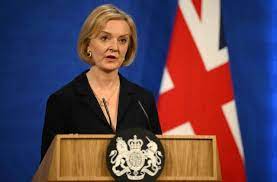The new British Chancellor, Jeremy Hunt, has scrapped his predecessor’s plans to reduce the tax paid on dividends.
In his mini-budget at the end of September, Kwasi Kwarteng announced that he would be rolling back Rishi Sunak’s plans to increase the basic rate of tax paid on dividends from 7.5% to 8.75%.
A news report from Money Week, an online medium, indicated, however, that Hunt was going to stick with Sunak’s plans and keep the rate at 8.75%,
The basic rate of dividend tax is paid by those investors who receive over £2,000 a year in dividend income.
In 2016, the government announced a major shakeup in the way dividends were taxed. Before the changes, basic-rate taxpayers effectively didn’t have to pay anything on dividend income.
This approach was widely criticized for being unfair as investors could earn as much as £42,000 a year from dividend income without having to pay any tax at all. Higher rate taxpayers had to pay a rate of 25%.
Using this loophole, contractors using limited companies and company directors could pay themselves in dividends and essentially avoid tax altogether, as long as they stayed below the basic rate band of income tax.
That changed at the beginning of the 2016-2017 tax year.
Under the new regime, investors received a £5,000 dividend allowance with tax being due on any income over this amount.
The tax-free dividend allowance was then reduced further to £2,000 in 2018, although any dividend income that falls within the personal allowance of £12,570 does not count towards the total. This does not apply to investments held within a Stocks and Shares ISA.
Following the tax cuts announced in the mini-Budget, rates were projected to fall back to last year’s level (1.25% lower across the board).
However, Hunt is going to scrap this change. Dividend tax rates will now remain at the levels in the table.
In the grand scheme of things, the dividend tax is not a big revenue generator, but it is a politically charged subject.
The Treasury estimates that keeping the 1.25% uplift will bring in around £1bn a year extra. That compares to the £915bn in total tax recipes in the 2021-2022 tax year.
Nevertheless, in 2019 the TUC and the High Pay Centre reported that just 1% of all taxpayers – those earning over £150,000 a year – pocketed 22% of UK dividend payments.
And there could be further changes to come to the dividend tax rate. Campaigners have long argued that dividend tax rates should be harmonised with income tax rates to narrow the gap between taxes on wealth and employment.
Raising the dividend tax rate to 20% would help narrow this gap, and once again, it could be one way for the government to raise funds without leaning on the average taxpayer. This could be an easy way to raise a couple of billion pounds a year and help the government argue that it’s trying to reduce income inequality.
The UK is already somewhat of an outlier when it comes to dividend taxes. The average dividend tax rate for European OECD countries is just over 23%, more than double the current basic rate here.






